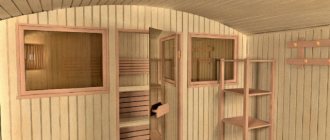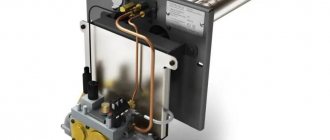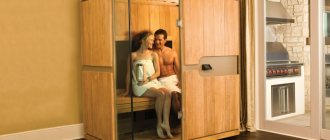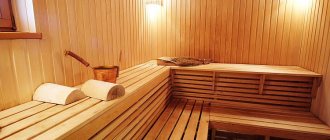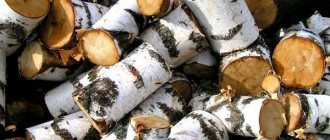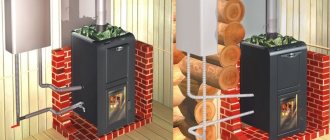Today, when we live in an age of high technology, it seems surprising that someone still uses wood for heating. If you look into any apartment or house, you can see modern heating appliances. However, do not forget about baths, saunas and fireplaces. For their work, “wood feeding” is necessary. Since people build them to pamper themselves, they want the quality to live up to their expectations. Although many people still use wood to heat their stoves and rooms, in recent years an alternative has emerged in the form of fuel briquettes.
What are fuel briquettes?
Fuel briquettes, which many also know as Eurowood , belong to the class of solid fuels that are produced by pressing sawdust and other natural materials under high pressure. It is possible to form wood waste into briquettes thanks to a special substance - lignin, which is present in any plant. Therefore, Euro firewood is completely safe, because in the process of its production no substances that can harm the environment or chemical reagents are used.
Why does it smoke?
The appearance of abundant smoke in a bathhouse may be associated with various violations of the rules for lighting it. Most often, the culprit is poor draft caused by mechanical blockage or contamination of the chimney pipe with combustion products. In addition, if the firebox and stove have not been used for a long time, it may take some time to warm up and dry the surface. In some cases, this requires placing an improvised torch in the chimney duct. As soon as the condensate evaporates, the draft will be restored.
The problem may also be the wrong choice of fuel material or its low quality. Damp firewood and briquettes produce abundant smoke.
Care must be taken to ensure that they remain dry during storage.
You can learn how to quickly and easily heat a sauna from the video below.
Types of Eurobriquettes
Companies involved in the sale of fuel can offer two types of fuel briquettes, which generally have the same characteristics.
Eurobriquettes RUF
They are made using the technology described above. The raw materials are sawdust and wood chips , which are compressed using a natural adhesive. The finished product has a rectangular shape. These fuel briquettes are the most popular because they are not only inexpensive, but also of good quality.
Eurobriquettes Pini-key
They are made according to a similar principle, however, there is one feature - at the very end of production they are fired . This allows the briquettes to be given natural protection from moisture, which significantly increases their shelf life.
This explains the higher cost of this firewood in contrast to the option described above. You can buy them for about 2 thousand rubles. for one ton. They also have external differences. In their shape they resemble a log with a through hole.
Price
| Types of briquettes | Material | Price for 1 ton (rub.) |
| Pini-kay | from pine needles | 8900 |
| birch | 9500 | |
| RUF | from sawdust | 6500 |
| from ancient flour | 7500 | |
| from pine needles | 6000 | |
| from pine and birch | 6500 | |
| birch | 6900 | |
| Nestro | 7500 | |
| Pellets 6-8 mm light | 8800 | |
| Pellets 8 mm gray | 8000 | |
| Peat briquettes | 7000-9000 | |
| Coal | 8000 | |
| Coal briquettes | 9500 |
What is better to choose regular firewood or euro?
Fuel briquettes are no different from other products on the market, and they also have both advantages and disadvantages. If we compare briquettes with firewood, the former have the following positive aspects:
- Increased burning time compared to wood. They take 4 times longer to burn completely than regular firewood. Therefore, such briquettes are very economical.
- After combustion of fuel briquettes, a very small amount of ash is formed relative to the original weight - no more than 1%. Firewood is different in this regard - if you heat a stove with it, then after combustion it forms coal, which makes up about 20% of the initial volume of the material. Some owners use the ash obtained after burning Eurowood for their own benefit. This is an excellent fertilizer for the soil. As a result of its application to the site, seedling growth improves due to an increase in potassium content.
- Euro firewood provides more thermal energy - about 2 times.
- Modern fuel briquettes emit heat during almost the entire combustion process. In the case of conventional firewood, the heating power never remains constant and decreases over time. After about 15 minutes the coals are completely extinguished. Euro firewood emit the same amount of heat until it is completely converted into ash, and even when it has turned into coals, it burns for about 1 more hour. This fuel is ideal for those people who often go outdoors with a barbecue.
- If you heat the stove with briquettes, you will not get sparks, smoke or unpleasant odors. Therefore, the use of Euro-firewood does not harm the environment, as well as people who sit next to the heat source.
- The combustion process of Eurowood is not accompanied by the formation of substances hazardous to human health. This is explained by the presence of fungi and mold in ordinary firewood, which are not found in fuel briquettes. Microorganisms cannot withstand high temperatures and die, creating toxic smoke.
- When using Euro firewood, no soot is formed, so the chimney walls remain clean.
- Small sizes of Euro firewood. Thanks to this quality, they can be rationally placed in a small area, saving a lot of free space. They are offered to customers in the form of neatly stacked stacks. In contrast, firewood has different shapes and sizes, so it will not be possible to stack them neatly even if you want to. Everyone is familiar with the situation when firewood is delivered to the customer: it is simply dumped out of the truck onto any free space on the site. Then everything depends entirely on you - you will have to spend more than one hour to move them to the barn and put them in the order you need.
Even though fuel briquettes have a lot of advantages, the main one should be considered efficiency. Although for some buyers other useful qualities of European firewood will be of no small importance. This includes cleanliness and order . In the case of ordinary firewood, which many owners use to heat their stoves, a large amount of dust, chips and other debris is often formed. When using briquettes, the owner solves all these problems at once. However, is it only right to choose briquettes for this reason?
Lighting up the sauna stove
It may not be possible to light the stove right away. Don’t be upset, because not everyone succeeds in lighting a stove in a bathhouse the first time. A lit match should be carefully brought to the paper and lit. The match can be replaced with paper twisted into a rope.
It is prohibited to use any flammable liquids to ignite the stove. There are times when the firewood is slightly damp. And since you won’t be able to quickly light a bathhouse with such firewood, you can use a dry alcohol tablet, which should be used according to the attached instructions.
After the paper has ignited, you can close the firebox door. At first the combustion process will not be very active. This occurs due to air pockets formed in the chimney. As a rule, after a few minutes this problem is eliminated and cravings return to normal.
With the firebox door closed, you should listen to the sounds coming from the stove. If after a few minutes a characteristic hum is heard, then the firewood has flared up. Otherwise, the kindling will have to be done again.
It is necessary to open the sub-door. It should not be completely closed, otherwise the flame will go out because air will not flow.
If there is a water tank and the stove is equipped with two valves, then you need to open the one that leads to the tank. At the same time, the chimney damper should be closed.
Advantages of firewood compared to briquettes
- A major advantage of briquettes compared to firewood is their ability to generate stable heat over a longer period of time. Although the heat intensity is less than when using firewood. Therefore, if you want to quickly warm up the room with European wood firewood, as with ordinary wood, then you will not succeed.
- People who are used to spending the evening with a book or a cup of strong tea by the fireplace will most likely be disappointed. This fuel will not be able to please them with the crackling characteristic of ordinary firewood, which creates that unique feeling of home warmth and comfort. With the help of classic firewood, it is very easy to obtain the necessary “sound accompaniment”, since they contain water, but briquettes do not have it.
- When using Euro firewood, you will have to put up with the unpleasant smell of ash. Ordinary firewood will not give you such an unpleasant surprise, since wood ash does not emit a tart odor.
- Fuel briquettes, which are offered in stores today, are a rather fragile product that easily turn into crumbs. If you do not want to lose precious fuel before your eyes, then you should choose strong, high-quality briquettes.
Now it has become a little clearer about the advantages that firewood and fuel briquettes have. It remains to get an answer to one more question that worries many owners - which fuel is the most economical?
Final stage
After opening the firebox door, you need to assess the condition of the firewood and firebrands.
If the following symptoms occur, it is necessary to fully open the valves and close the blower half-door tightly:
- the firewood is burnt out;
- gray ash formed;
- the coals turned red;
- no flame;
- the stones turned red;
- water boils in the boiler;
- in the steam room the temperature rose to 60 - 90°C.
Next, windows and doors open. If soot forms on the stones during heating, it must be washed off with water. Then carefully and quickly water all surfaces of the steam room. After this procedure it will not become colder.
Now the windows and doors should be closed, except for the window in the steam room. At this point, the heating of the bathhouse is completed, but it is still too early to enter the steam room, since the room needs to brew and warm up evenly. After 1-2 hours you can start taking bath procedures. The window can be closed.
The question is the price
Fuel briquettes, like firewood, differ in their cost, which is determined by their quality. Today, companies offer two types of briquettes :
- Euro firewood of the highest quality, which is characterized by a high density of 1400 kg/m3. Among the advantages of these briquettes, it is worth noting a longer burning time, the ability to generate more heat and leave less ash. When finished, they are products of a dense structure without cracks.
- Euro firewood of ordinary quality, which has a density of 1000 kg/m3. Unlike briquettes of the highest quality, this Euro firewood has a layered structure and is more susceptible to damage. As they burn, they release less thermal energy, burn faster and produce more residue.
The uneven prices for fuel briquettes can be explained by the manufacturer's costs for equipment. If you press briquettes , you can get a better final product, but at the same time it accelerates equipment wear. All this is taken into account by manufacturers and included in the final price of the product.
It is quite logical that high quality European firewood will cost more than regular briquettes. But at the same time, briquettes of the highest quality will be more economical for the buyer compared to ordinary birch firewood. What can we say about briquettes of ordinary quality.
Even if someone thinks that the cost of such fuel is too high compared to firewood, you can always find a way to save money - make it yourself. First, you will have to stock up on raw materials for fuel briquettes - twigs and twigs, which you will probably find on your site. You need to add a little clay to them and fill them with water . You need to add water little by little so that the mixture can be formed into bars.
Next, you will need molds - without them you will not be able to make briquette fuel correctly. They need to be filled with the prepared mixture, placed under a press and allowed to lie in the sun for a couple of days. But don’t expect homemade stove briquettes to be of the same quality as store-bought briquettes. However, you can save money this way. Another positive aspect of this solution is that you will be able to clear your area of debris.
Selection options
When choosing firewood, it is important to consider the following characteristics of wood:
- Resinousness . The resin content of tree tissue determines the suitability of firewood as fuel. The combustion of this substance forms a hard-to-remove coating on the walls of chimneys. When using a flow-through heater for heating, smoke with a large amount of soot settles on the stones. When steam is supplied, it rises and the room is filled with hard, heavy air.
- Density _ The higher it is, the more heat the wood gives off during combustion.
- Humidity . Freshly cut wood contains 50% moisture in its tissues. For high-quality combustion, this figure should not exceed 20%.
- Log sizes . When purchasing ready-made firewood, it is important to take this parameter into account. Optimal indicators: length – 45 – 50 cm, thickness – 8 – 10 cm.
Ease of preparation . When preparing firewood yourself, it is important to consider how it is sawed and split. For example, white acacia has a high heat output, which makes it attractive as a fuel. However, the structure of this wood is dense, viscous, and has many interwoven fibers. Therefore, splitting acacia firewood yourself turns into a real test of strength. Oak can be contrasted with the unruly acacia. Despite its high strength, it can easily be split with a regular ax or a special cleaver.
Ash content . The more minerals a tree contains, the more ash it leaves. Ash content is measured as a percentage of the total weight of firewood. It is divided into internal (in an amount from 0.2 to 2.16%) that is present in the tree under natural conditions, and external (up to 20%), introduced during harvesting, storage or transportation. Moreover, the second significantly exceeds the first. The ashiest types of firewood are pine - 2.19 - 1.39%; spruce – 2.23 – 2.31%; birch – 2.43 – 0.52%; aspen – 2.73%.
Region where the bathhouse is located . This is one of the important factors in economic terms. For example, hornbeam has the highest calorific value. But if the bathhouse is built in a place where this tree does not grow, then a lot of money will be spent on purchasing firewood. Therefore, to fire a stove in a bathhouse, you should choose wood with the highest heat transfer value among that which is common in the region where the bathhouse is located.
Storage features . If firewood is being prepared for future use, you need to pay attention to how suitable the variety will be for long-term storage. The least susceptible to rotting are oak, alder, ash logs and larch. Willow, linden, poplar or aspen must be used up first, or provided with ideal conditions.
So which is better?
Considering the above, we can highlight the main advantages that fuel briquettes have - high burning time, saving storage space, lack of garbage, safety for the environment and a more affordable price compared to conventional firewood. But if you are not ready to deprive yourself of the opportunity to enjoy the crackle of burning dry birch logs, then you will not experience much benefit from buying Euro firewood. In addition, briquette fuel will not help you warm up the room as quickly as firewood.
It follows that when choosing fuel, you must first take into account both the characteristics and positive aspects of each product, as well as the purposes for which you intend to use them.
Storage rules
Manufacturers recommend storing fuel briquettes under certain conditions:
- temperature from 5 to 400C;
- relative air humidity 40-80%;
- away from sources of open flame and away from direct sunlight.
Briquettes must be reliably protected from acid-base environments and moisture. The shelf life of fuel briquettes is from 3 to 5 years.
Hand wash technology
A basin with a palm means that workwear can only be washed by hand.
Typically, cotton and delicate fabrics (wool, natural viscose) are washed in this way without complex stains. It is worth noting that “manual” products are selected without aggressive substances that corrode the skin.
We suggest you find out how long you can store meat in the freezer
How to wash:
- Soak the items for a couple of hours in soapy water at the appropriate temperature for the fabric.
- Scrub the stains with a brush.
- Rinse several times, maintaining the same temperature as soaking.
- Wring and hang.
Stubborn stains are pre-treated with laundry soap, vinegar, citric acid or soda. For white items, it is recommended to use bleach.
How to wash a jacket in a washing machine correctly. Washing overalls jackets made of various materials
Today, when we live in an age of high technology, it seems surprising that someone still uses wood for heating. If you look into any apartment or house, you can see modern heating appliances. However, do not forget about baths, saunas and fireplaces. For their work, “wood feeding” is necessary. Since people build them to pamper themselves, they want the quality to live up to their expectations. Although many people still use wood to heat their stoves and rooms, in recent years an alternative has emerged in the form of fuel briquettes.
Pros and cons of using briquetted fuel
Positive aspects of using briquetted fuel:
- Briquettes can be used in any type of stoves and boilers that burn solid fuel.
- Low ash content. The ash formed after the combustion of briquetted forms from husks and peat can be used as fertilizer.
- When burning, a minimal amount of smoke and other waste is generated, so the chimney does not need to be cleaned for a long time.
- Optimal heat transfer to maintain a comfortable temperature in the house.
- Compact dimensions and low weight facilitate transportation, storage and use of this type of solid fuel.
The main disadvantage is that briquettes are easily flammable. This is especially true for peat products. That is why, to store briquetted raw materials, you need to allocate a room away from living rooms, and also ensure that it has the appropriate degree of fire safety and good ventilation.
Attention! Debris and dust from briquettes can ignite, so the room must be kept clean and the products stored correctly.
We select funds
There is no universal powder for workwear. Detergents must match the type, color, and characteristics of the fabric. Membrane and waterproof fabrics can be washed with liquid detergents without aggressive detergents. The ineffectiveness of the product is not allowed, especially in relation to industrial stains - fuel oil, diesel fuel, gasoline, radiation. Several brands of professional products are described in the table.
Table 2. Products for workwear
| Name | Photo | Purpose | Weight, kg | Consumption | price, rub. |
| Italmas-MS | Food industry, livestock | 5 | 10-20 g per 1 liter of water | 450 | |
| Triplex Energy | Enterprises for the assembly and repair of cars and ships, construction. Copes with greasy, oil stains, traces of paint, varnishes | 25 | 10 g per 1 kg of dry laundry | 350 | |
| "Ekol" | Any fabrics except silk and wool | 20 | 60-75 g per 10 liters of water | 750 | |
| "Nika-lux" | Any products made from knitwear, natural and synthetic fabrics. Copes with blood, grass, and grease stains | 5 | 20 ml per 1 kg of dry laundry | 880 | |
| BLIS | Removes inorganic oils, suitable for auto mechanic suits | 5 | 40-50 ml per 1 kg of dry laundry | 260 | |
| Sterkh-702 | Silk, wool, synthetics, cambric | 5 | 100-120 ml per 2-3 kg of dry laundry | 250 | |
| Sterkh-71 | White and colored linen made of cotton, linen, synthetics | 5 | 150-180 ml per 10 kg of dry laundry | 250 |
Important. If clothing contains reflective inserts, the use of bleaches is prohibited.
House heating
Fuel briquettes are probably ideal for heating a home. The ability to light the stove once and maintain the fire and heat for a long time without additional tossing allows us to talk about the good characteristics of Eurobriquettes. Let's look at how to heat a brick stove with fuel briquettes within the house.
Of course, pressed bricks will not burn immediately, so let’s figure out how to light fuel briquettes. This is quite simple to do; first of all, you should put tree bark, wood chips, and some dry newspapers in the oven, and then place alternative firewood on top. During kindling, while the wood chips are actively igniting, we adjust the airflow. As soon as the fire starts on the first briquettes, you can add the rest.
Another option is to heat the stove with fuel briquettes after the first batch of wood has burned and decent coals have appeared. In such a firebox, the fire can quickly be caught on Eurobriquettes.
Depending on your needs, we choose the tactics for filling the stove with fuel:
- If you stack the fuel briquettes loosely, at a short distance from each other, the fire in the stove will be quite intense and will generate a lot of heat, which will allow you to quickly heat the house.
- If you stack alternative firewood tightly to each other and cover the vent, the firewood will smolder for a longer time, which is perfect for heating a house at night. At the same time, the consumption of fuel briquettes per day will be several times less than firewood.
In order to roughly understand how many eurobriquettes will be required to heat a house, you should conduct several experiments, each time finding out this parameter in practice. There are too many nuances in this matter.
It is worth noting that fuel briquettes have a specific purpose - to create heat, while firewood can be considered for the purpose of creating a comfortable and cozy environment. For example, is it possible to light a fireplace with fuel briquettes - well, of course, yes, but they will not create the same atmosphere as firewood with its pleasant crackling and uneven fire. By the way, the smell from burning wood is stronger and more pleasant.
In conclusion, I would like to say a little about the storage of Eurobriquettes and compare it with the preparation and storage of firewood. Fuel briquettes are sold in separate packages wrapped in cellophane. In this state, they are not afraid of moisture, which means they can be placed in a utility room, attic, basement or shed. Eurobriquettes look like bricks or tubes, all of the same shape, which is very convenient for storage. In addition, they take up much less space, since for the winter they will be needed several times less than firewood.
If we remember what difficulties await us when collecting firewood, there is food for thought when choosing the appropriate fuel. Eurobriquettes do not need to be sawed, split, stored and dried throughout the year; they are already ready for use.
